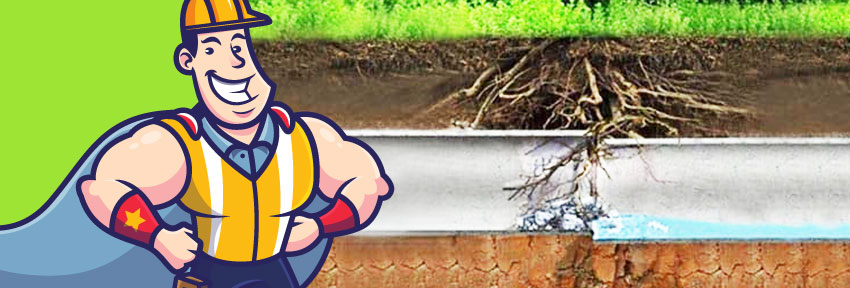Main drain root problems
 Explore the critical issue of main drain root problems, a common challenge for homeowners and property managers. Root intrusion in sewer lines can lead to significant plumbing difficulties, often requiring immediate attention. In this detailed guide, we delve into the causes, signs, and effective solutions for root-related blockages in your main drainage system. Understand how tree roots seek out moisture and nutrients in sewer pipes, leading to cracks, blockages, and potential property damage. Our comprehensive overview covers the risks associated with older clay and cast iron pipes, the symptoms of root intrusion in your plumbing system, and the latest techniques for prevention and repair. Stay informed and prepared to tackle main drain root problems with our expert advice.
Explore the critical issue of main drain root problems, a common challenge for homeowners and property managers. Root intrusion in sewer lines can lead to significant plumbing difficulties, often requiring immediate attention. In this detailed guide, we delve into the causes, signs, and effective solutions for root-related blockages in your main drainage system. Understand how tree roots seek out moisture and nutrients in sewer pipes, leading to cracks, blockages, and potential property damage. Our comprehensive overview covers the risks associated with older clay and cast iron pipes, the symptoms of root intrusion in your plumbing system, and the latest techniques for prevention and repair. Stay informed and prepared to tackle main drain root problems with our expert advice.
Dealing with Drain Root Problems - Effective Solutions
Roots are another major issue for main drain and sewer systems that can be avoided. Most of the time, trees and shrubs are planted far from drain or sewer lines unless added after the line installation. Ensure you know where your drain and sewer line is located and do not place any plants with extensive root systems nearby. Additionally, keep all root systems adequately watered. Roots will usually only extend toward the pipes under your home if they are looking for a water source, and the sewer line can provide that source.
What Roots Do To Pipes
Mature trees can have enormous underground root structures. Every year, the tips of these roots expand very fine, seeking more space and water. The roots infiltrate underground plumbing pipes such as your main drain through small openings at the pipe joints. As more and more roots enter the pipe, they create a tangle in your drain and let in the dirt through the openings. The root blockage impedes waste from your appliances from properly passing through the pipes, catching toilet paper, grease, hair, and other debris until the flow is reduced or your drain is completely blocked. Enough root infiltration and expansion can also eventually.
Risk Factors For Root Problems
-
1)The first factor is having large, mature trees within 30 feet of your home’s main drain line to the sewer. (This is a 4-inch drain line connecting your home’s plumbing to the public sewer and is the homeowner’s responsibility.) No trees, no root problem.
-
2) Second, if your home has clay or cast-iron pipes, your drains are susceptible to root damage through the softer material and weaker joint openings. However, modern piping uses harder, more airtight ABS or PVC piping, and roots cannot infiltrate this material. If you’re not sure what kind of pipes your home has, it’s generally the case that homes built before 1970 have weaker pipes and are at risk for root damage.
How Do I Know If I Have Roots In My Main Drain?
The easiest way to know if you have roots in your drain is water backing up in the basement.
If you clear up the clog and it doesn’t come back, no roots. If you clear up the clog and it comes back soon after, it’s time for an investigation.
A plumber can come out and do a sewer camera inspection to see what’s causing the recurring backups. If you’re not experiencing any clogs but want to be proactive, you could have a plumber come out and do a sewer camera inspection.
Tree types
Various species of trees have different water requirements. Trees that have high water demand characteristics have root systems capable of following water vapor escaping from leaking pipes and will exploit the source of water inside the pipe. The top 5 species of trees to control the moisture inside sewer pipes are listed in order below:
- Poplar
- Willow
- Elm
- Ash
- Birch
- Other trees and woody shrubs commonly associated with sewer root problems are Maples, Cottonwood, Russian Olive, Apple, Pear, Lilac Honeysuckle, and Chokecherry.
Root spread
During drought conditions and in winter, tree roots travel long distances in search of moisture. As a general rule, tree roots will extend up to 2. 5 times the tree's height, and some species of trees may have roots extending 5 to 7 times the height of the tree.
Root growth control
The standard method of removing roots from sewer service pipes involves drills, root saws, and high-pressure flushers. These tools help release blockages in an emergency; however, cutting and tearing roots encourages new growth. The effect is the same as pruning a hedge to promote faster, thicker, and more vigorous regrowth. Roots removed by augering usually are just a tiny fraction of roots inside the pipe.
To augment the cutting and augering methods, there are products available commercially that remove the roots inside the pipe without harming the tree and delay future root growth. The use of copper sulfate and sodium hydroxide is not recommended because of adverse environmental impacts on the downstream receiving water.
A drain camera inspection of the pipe to confirm root damage and determine its extent is recommended.
Get A Quote 514-316-1043

